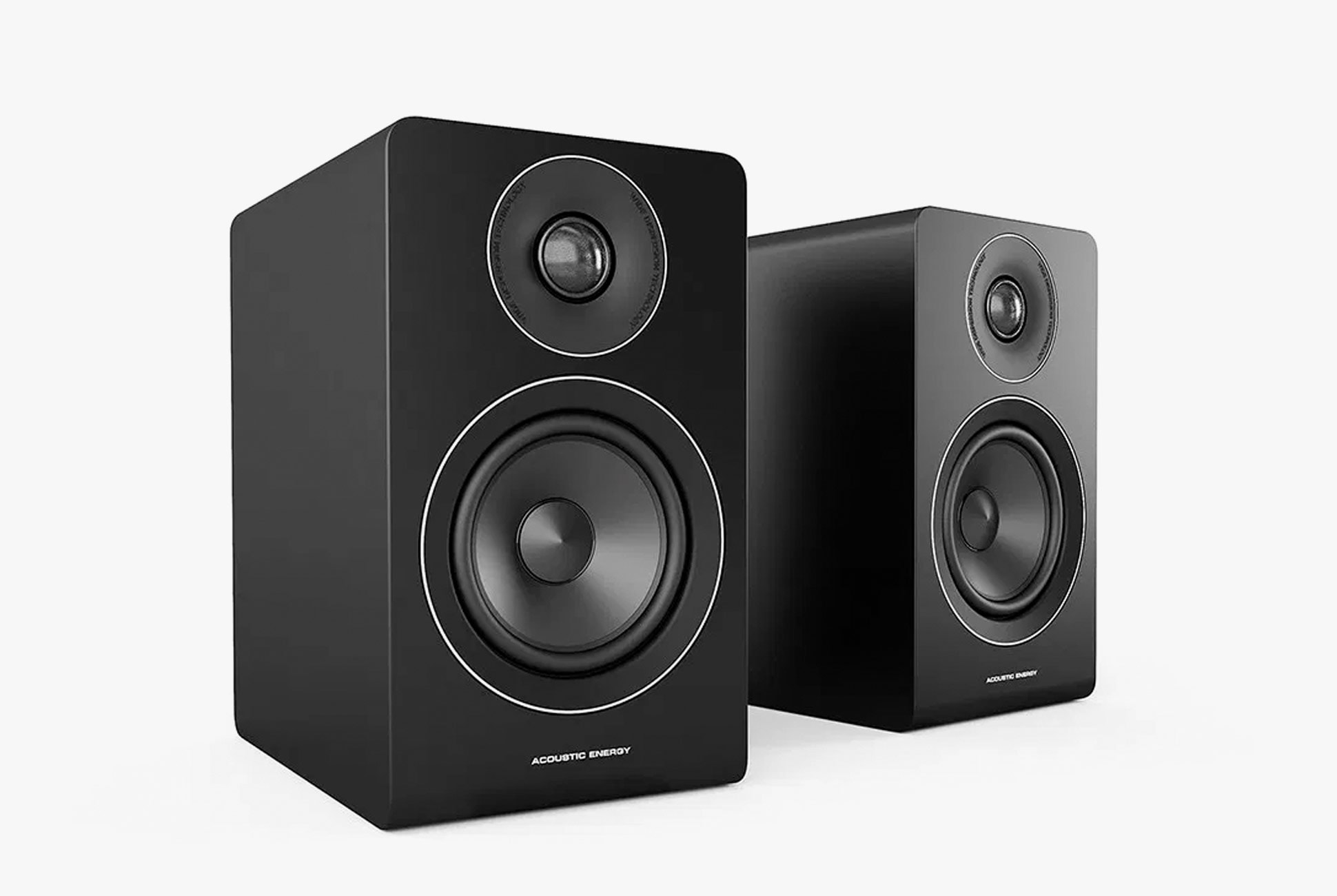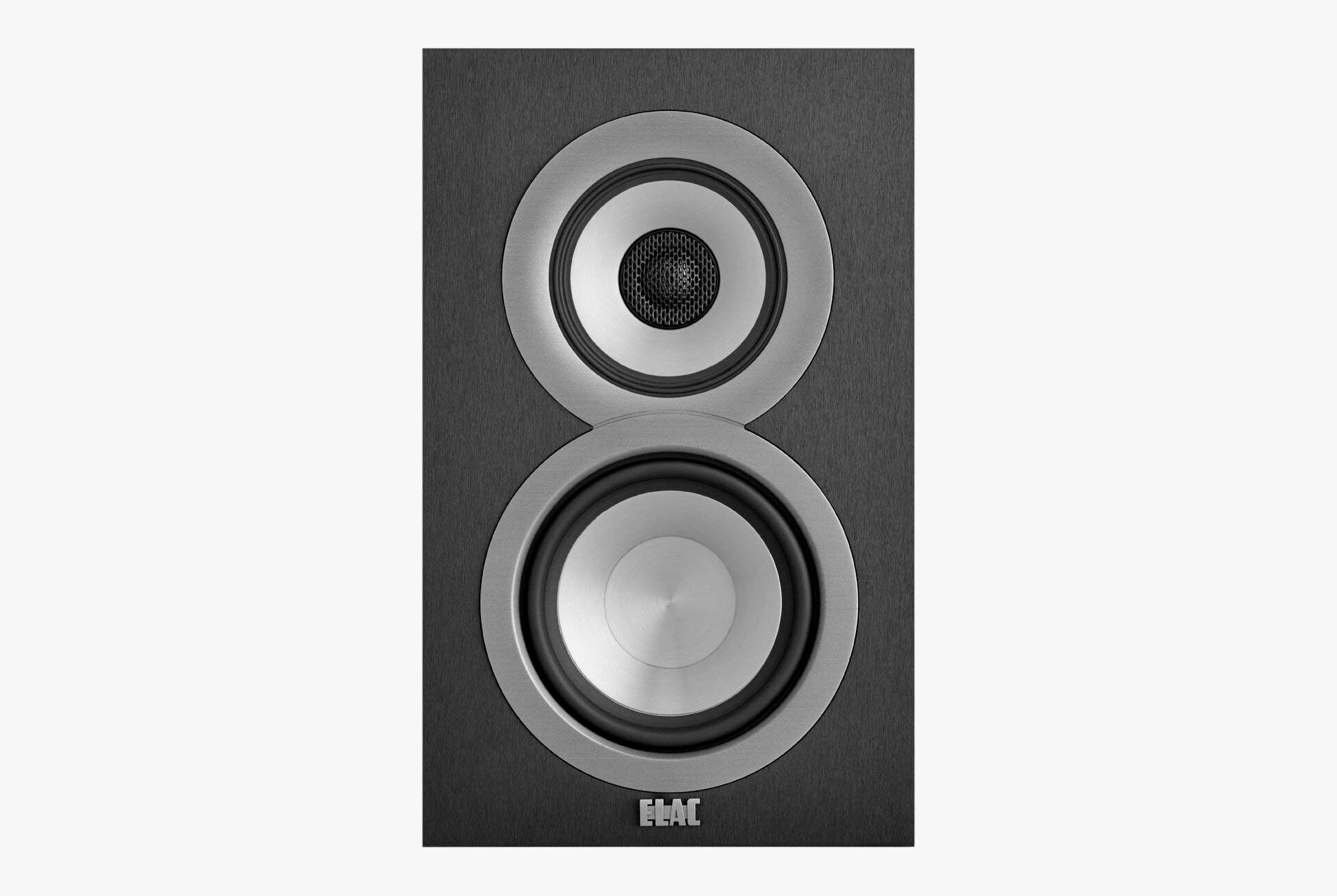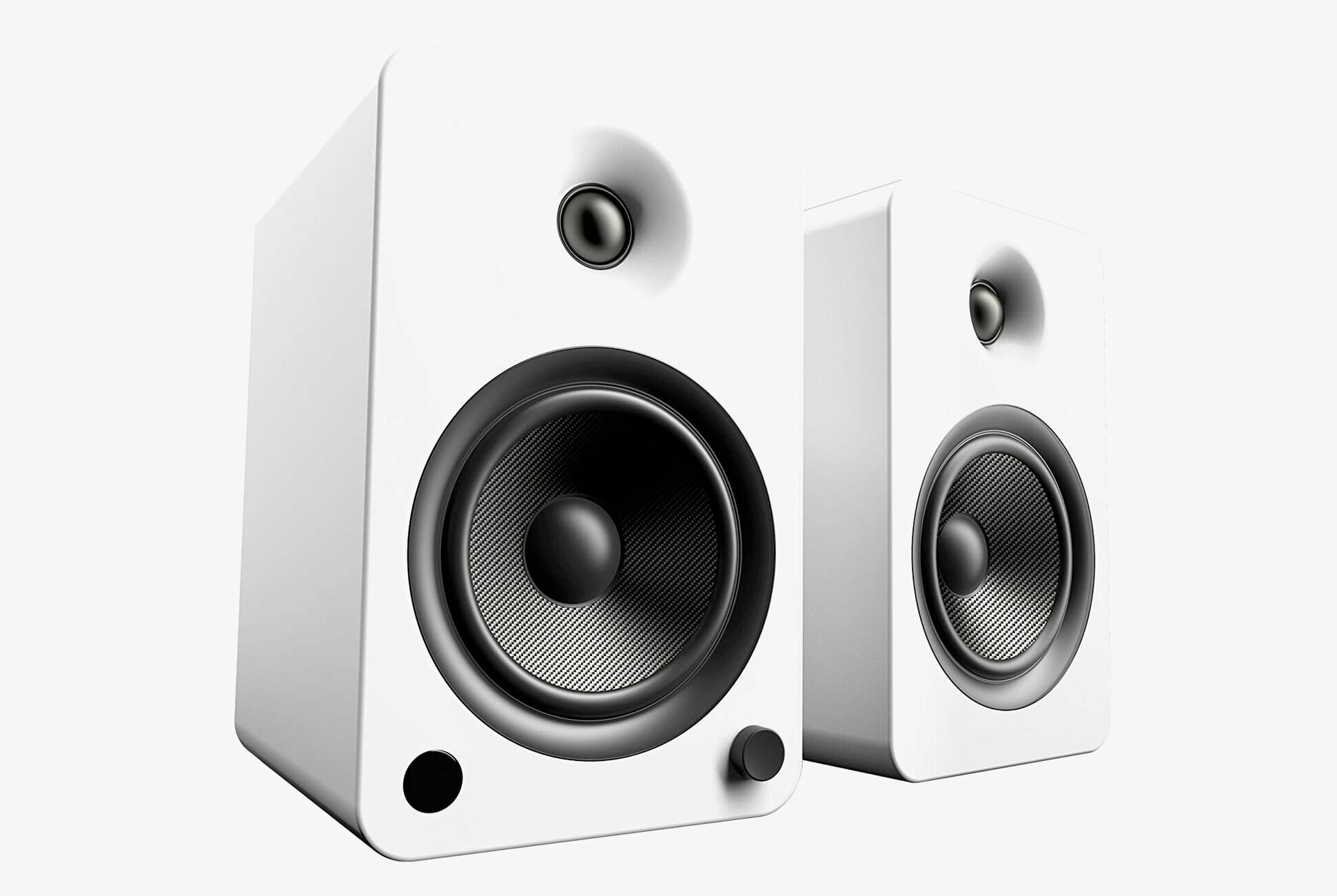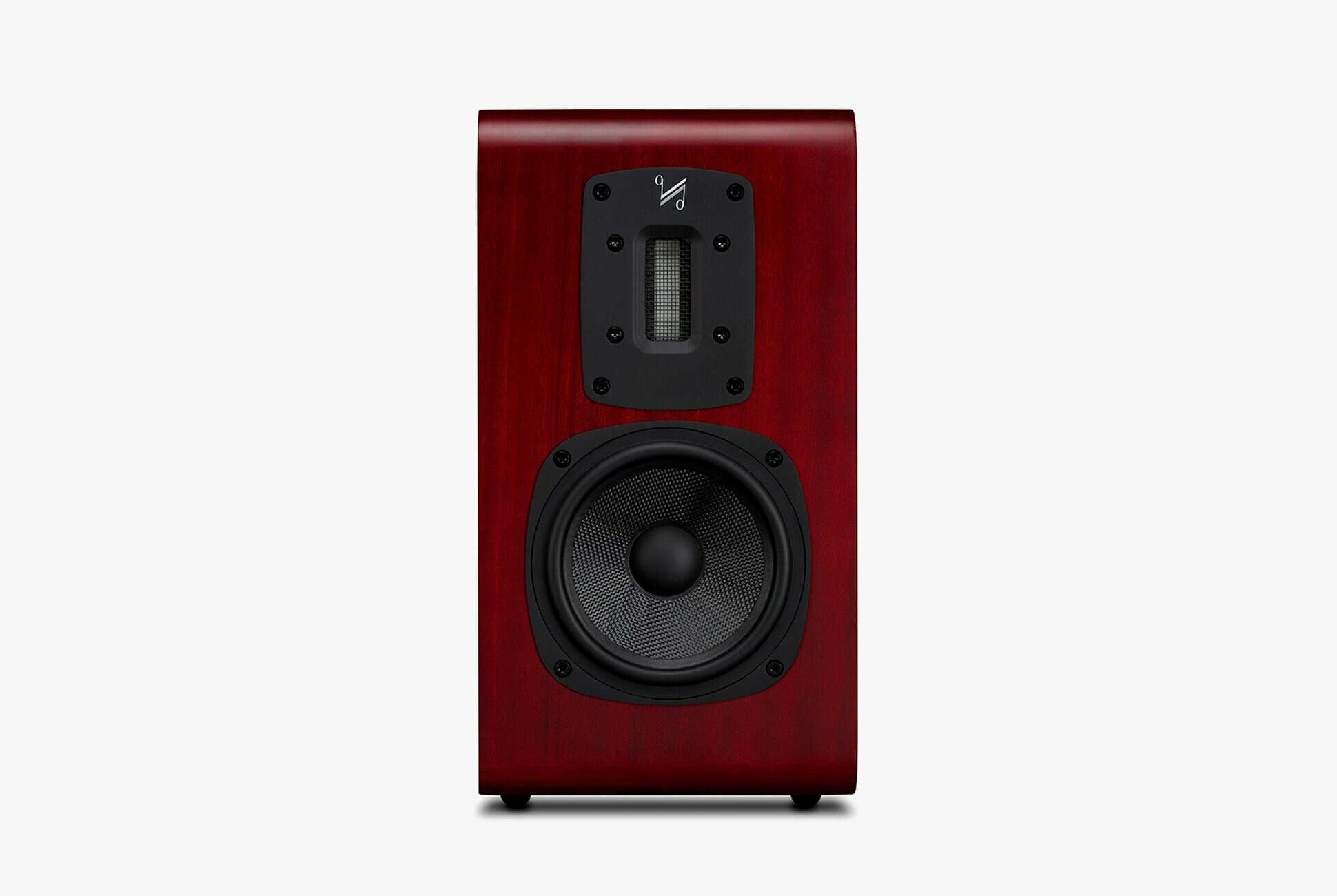Last Updated, January 2019: We’ve updated our guide of the best bookshelf speakers with the best picks for under $300, under $500 and under $1,000, as well as our favorite bookshelf speakers with wireless connectivity. Prices and links have also been updated.
Introduction
Smart speakers have taken a considerable slice of the loudspeaker market over the past twenty-four months, with Amazon and Google both announcing superior-sounding versions of their Echo and Google Home smart speakers, Apple releasing its first-ever smart speaker, and traditional speaker companies, like Bose and Sonos, also getting in on the action. With their ease of setup, their ability to control your smart home gadgets and answer questions, as well as wireless play with other smart speakers, it’s no wonder that smart speakers have traditional loudspeaker manufacturers running scared.
But there will always be a market for bookshelf speakers. Why? Because stereo sound is special. Music that was recorded in stereo, needs to be listened to in that format unless we are content with listening to single loudspeakers again that attempt to simulate stereo or even surround sound with multiple drivers packed into an enclosure the size of a coffee can. Stereo bookshelf loudspeakers do a rather convincing job recreating the soundstage; the physical space (studio, garage, music hall) where the recording was made and that illusion of being there with your favorite artist is a big part of the experience. They also reproduce the scale of the recording in a far more convincing way; crank Led Zeppelin’s “Kashmir” through an Apple HomePod and you will discover just how poorly smart speakers reproduce the dynamics of a challenging track.
Active Versus Passive
Wireless smart speakers are also limited by the amplification that the manufacturer has stuffed inside; space limitations almost dictate the use of Class D or switching amplifiers that are more efficient than traditional linear amplifiers, which require large heatsinks to dissipate heat. Class D amplifiers have improved greatly in recent years in regard to sound quality and require less space, are cheaper, and weigh less.
If you really care about sound quality, you have plenty of passive (which require amplification) and active loudspeaker (with built-in amplification) options to select from. Passive loudspeakers are more flexible as you can experiment with different types of amplifiers, DACs, and placement options. Active loudspeakers are a better option for listeners who don’t want the added expense of multiple components, and an equipment rack filled with cables. The trade-off with any active loudspeaker is that you are committed to how the final product sounds. There is no way to try another amplifier or DAC (Digital-to-Analog Converter) to alter the sound. Active loudspeakers also require at least one of the loudspeakers to be plugged into the wall; limiting how you set the speaker up in your space. One thing is for certain, there is no shortage of affordable passive or active bookshelf loudspeakers for all types of spaces.
Analog or Wireless
It’s also worth considering wireless bookshelf speakers if you want the option to stream audio straight from your laptop, tablet or computer. A lot of newer models have either built-in wi-fi, Bluetooth or both. In addition to being really easy to use, this added connectivity gives wireless bookshelf speakers a few distinct advantages over bookshelf loudspeakers. They don’t require a direct connection to both an amplifier and source, like traditional analog speakers. They have fewer restrictions as to set-up locations or built-in amplification. And they most likely support the streaming services that you already pay for.
In the past, the major Achilles’ heel for wireless loudspeakers was sound quality, but that has taken a major leap forward in recent years, with products like the KEF LS50 Wireless and Devialet Phantoms. Wireless loudspeakers now feature high-performance internal amplification, phono pre-amplifiers, DACs, and support for major streaming platforms such as Spotify Connect, Airplay 2, Tidal, Pandora, and others. The one thing to always remember with all wireless loudspeakers is that they still require a power source — they’ll take up a wall outlet — and some wireless models require a tether from the master loudspeaker to the slave as the amplification is only built into one speaker.
The Best Bookshelf Speakers of 2019
Under $300
ELAC Debut 2.0 B6.2

Having built audio products for ninety-two years, ELAC knows a few things about loudspeaker technology. While firmly established in Europe and Asia, the German brand never really caught on in North America until it hired Andrew Jones, a famed loudspeaker designer for his award-winning work at KEF, Pioneer, and TAD. At the entry-level, manufacturers often design using off-the-shelf drivers and you get what you pay for. The Debut 2.0 B6.2 may not be a very catchy sounding model name, but you get a lot of performance from the in-house designed 6.5” Aramid fiber woofer, and 1” cloth dome tweeter. So much performance, that they almost beg you to spend considerably more on the amplifier that drives them. The front-port means that users can place them up against a wall as a last resort, but you probably don’t want to do that. They may not be as balanced sounding as their more expensive brethren in the Uni-Fi line, but the Debut 2.0 B6.2 disappear in the room on solid stands and let you dig deeper into your music collection at a price point that should be considerably higher.
Specs:
Key Features: 2-way Bass Reflex, 6.5″ Aramid fiber woofer, 1″ cloth dome tweeter
Frequency Response: 44Hz – 35kHz
Sensitivity: 87dB @ 2.83v/1M
Impedance: 6 ohms
Power Handling: 120 watts
Inputs: 5-way metal binding posts
Weight: 16.3 pounds
Paradigm Monitor SE Atom

Paradigm designs and manufactures its award-winning loudspeakers in a state-of-the-art facility on the outskirts of Toronto, and one of the many advantages of making its own drivers and parts in-house is the trickle-down effect from loudspeakers with five-figure price tags. At first glance, the diminutive Monitor SE Atom are unlikely to blow anyone away with their boxy and somewhat austere appearance. The gloss white finish is the way to go unless you find yourself drawn to the matte black which looks like a lot of other speakers. Where the rubber meets the road with these loudspeakers is when you remove the grille covers and discover that Paradigm is spoiling you with a scaled-down version of their X-Pal perforated phase-aligned tweeter and a robust 5 ½” mid-bass driver that belongs on loudspeakers that are double the price. Although a relatively benign load, the Monitor SE Atom take a significant step forward if you reward them with power. Tubes or warm sounding solid-state is the way to go with these neutral sounding speakers that commit so few sonic errors that one forgets how little they cost.
Specs:
Key Features: 2-way Bass Reflex, 1” X-PAL, ferro-fluid cooled tweeter, 5.5” polypropylene woofer
Frequency Response: 61Hz – 21kHz +/- 3dB
Sensitivity: 89dB @ 2.83v/1M
Impedance: 8 ohms
Power Handling: 50 watts
Inputs: 5-way metal binding posts
Weight: 12 pounds
Q Acoustics 3020i

Having only gained a following recently on these shores, Q Acoustics is proving that the hype about their products abroad is legitimate when you sit down and listen to what the 3020i bookshelf loudspeakers can accomplish. The updated 3020i is larger than its predecessor and now features a new crossover, better internal bracing, as well as recessed binding posts for those who may want to wall-mount or set-up close to the wall on a credenza or even desktop. The 3020i may not be overly difficult to drive but they benefit from some power and its 5” mid/bass driver is capable of respectable bass extension with the right amplifier. The 1” soft-dome tweeter balances out the warm tonal balance of the speaker with some needed bite; allowing the 3020i to show off its sense of scale, detail, and overall refinement. Hard to find much fault with these over-achieving loudspeakers at all.
Specs:
Key Features: 2-way Bass Reflex, 0.9” tweeter, 5” midrange/woofer
Frequency Response: 64Hz – 30kHz, +/- 3dB
Sensitivity: 88dB @ 2.83v/1M
Impedance: 6 ohms (4 ohms minimum)
Power Handling: 75 watts
Inputs: Recessed binding posts
Weight: 12 pounds
Under $500
Acoustic Energy AE100

Once written off for dead after being sold to overseas investors, Britain’s Acoustic Energy is back with a vengeance. With the original team who built some of the finest bookshelf loudspeakers to come out of England back in place, it was only a matter of time before they started producing speakers like the AE100 again. Their 4” woofers can only move so much air, but the AE100 will surprise you with taut bass if you feed them with enough power: 50-75 watts are more than sufficient if your space is not overly large, and they will not beg for mercy if you drive with something more powerful like the Schiit Audio Vidar, or a vintage Yamaha integrated amplifier. The 1” soft-dome tweeter is smooth sounding, giving the AE100 a balanced, yet somewhat laid back presentation overall. Like the more expensive Quad S-2, the AE100 sound better on inert stands or supported by isolation feet if you plan to use them on a media center or credenza.
Specs:
Key Features: 2-way Bass Reflex, 4” mid/bass paper cone woofer, 1” soft-dome tweeter
Frequency Response: 45Hz – 35kHz, +/- 3dB
Sensitivity: 87dB @ 2.83v/1m
Impedance: 4 ohms
Power Handling: 75 watts
Inputs: 5-way metal binding posts
Weight: 9 pounds
ELAC Uni-Fi UB5

ELAC offers many outstanding bookshelf loudspeakers including the super affordable Debut 2.0 B6.2s, but its real gem is the Uni-Fi UB5. Concentric drivers offer an ideal set-up from a time-domain perspective; the tweeter and woofer diaphragm are combined within a single voice-coil allowing the sound to reach your ears from a singular “point source” making music sound more cohesive. Concentric drivers are complicated to get right and are usually found on more expensive loudspeakers such as the KEF LS50 and LS50 Wireless. Andrew Jones took a chance combining the concentric driver with a separate 5.25” aluminum cone woofer in such a small cabinet but the coherency of the sound is unmistakable. The UB5 have a smoother presentation than their less expensive siblings and also benefit from higher quality sources and amplification upstream. Like the LS50, the UB5 require power to really get up and go, but the reward is a sense of effortlessness with all genres of music and a level of transparency rarely achieved with loudspeakers this affordable.
Specs:
Key Features: 3-way Bass Reflex, 1” soft dome concentrically mounted tweeter, 4” aluminum cone midrange, 5.25” aluminum cone woofer
Frequency Response: 46Hz – 25kHz, +/- 3dB
Sensitivity: 85dB @ 2.83v/1m
Impedance: 4 ohms
Power Handling: 140 watts
Inputs: 5-way metal custom binding posts
Weight: 16.5 pounds
Kanto Audio YU6

Kanto Audio offers a stable of active loudspeakers, including models which include support for Bluetooth aptX. What sets the YU6 apart is the inclusion of a moving magnet phono pre-amplifier; which KEF left out of the LSX that we recently reviewed, making it ideal for those getting into vinyl for the first time who may not want to spend additional money on an external phono stage. Kanto has also included a 24-bit/96 kHz DAC with the YU6 which sounds great if you are streaming high-res digital audio from a smartphone or external streamer. The YU6 is a two-way ported design with a 5” Kevlar woofer, and 1” soft dome tweeter powered by a 200-watt class D power amplifier that splits the power between each loudspeaker. The YU6 are tethered together with a supplied run of loudspeaker cable. The active speaker of the pair (left channel) must be plugged into a power source with the supplied power cord which is something to remember when deciding on set-up location. The YU6 benefit from space from the wall behind them and prefer stands between 26-31” for optimal tweeter height. Get everything just right and YU6 sound far larger than they look and offer a propulsive performance with layers of detail and a warm sounding midrange that does vocals justice.
Specs:
Key Features: Active, 2-way Bass Reflex, 200-watt class D amplifier, Bluetooth aptX
Frequency Response: 50Hz – 20kHz, +/- 3dB
Sensitivity: N/A
Impedance: N/A
Power Handling: 200-watt class D amplifier
Inputs: 3.5mm mini-jack AUX, RCA phono, 2x optical, subwoofer output, USB
Weight: 9.4 pounds
Under $1,000
Bowers & Wilkins 606

B&W took its time replacing the award-winning 685 S2 bookshelf loudspeakers, and there is much to love about the B&W 606 which do so many things right. If you crave an engaging pair of loudspeakers in a package that works either on stands or a media console, the 606 deliver a taste of B&W’s Continuum cone technology which is usually reserved for its much more expensive models and in a cabinet that looks very sharp in its white finish. The 606 might be a bookshelf loudspeaker but don’t tell its 6.5” midrange/bass driver that; this is one loudspeaker that can deliver deep, tight bass that is well balanced against the rest of the sonic spectrum. With a lively sounding tweeter, the 606 will never fail to retain your attention but don’t shy away thinking that these loudspeakers are bright sounding. They are detailed, engaging, and very balanced sounding once they get some hours on them. A little bit of warmth from your amplifier couldn’t hurt.
Specs:
Key Features: 2-way Vented Box, 1” aluminum dome tweeter, 6.5” Continuum mid/bass woofer
Frequency Response: 52Hz – 28kHz, +/- 3dB
Sensitivity: 88dB @ 2.83v/1M
Impedance: 8 ohms
Power Handling: 120 watts
Inputs: 5-way metal binding posts
Weight: 15.2 pounds
KEF Q350

Two terms best describe KEF’s update of its best-selling Q300 loudspeaker: seamless and scale. The KEF Q350 looks and feels completely updated. It has the next generation of company’s Uni-Q driver technology with its tangerine waveguide on the tweeter which helps the concentric driver direct sound more evenly. It has a more minimalist design that dispenses with everything but a clean looking baffle. Gone are the drilled holes for the grille covers which now attach magnetically. KEF also moved the port to the rear of the cabinet with the Q350 which means that they require a little bit of space between themselves and the wall behind them – just not too much as the bass benefits from some boundary reinforcement. The Q350 is slightly more reserved sounding than some of their competitors but these speakers reproduce music with a greater sense of scale and with a seamless quality from the bass through the treble that makes other loudspeakers sound less coherent and congested. Neutral sounding amplifiers need not apply for this loudspeaker to be the end game for many music lovers.
Specs:
Key Features: 2-way Bass Reflex, 6.5” aluminum Uni-Q woofer, 1” aluminum HF tweeter
Frequency Response: 63Hz – 28kHz, +/- 3dB
Sensitivity: 87dB @ 2.83v/1M
Impedance: 8 ohms
Power Handling: 120 watts
Inputs: 5-way metal binding posts
Weight: 16.8 pounds
Quad S-2

Quad cut its teeth in 1957 with the original Quad ESL; arguably one of the most significant loudspeakers of all-time and still considered by many audiophiles to be the holy grail of loudspeaker design. While not an electrostatic transducer like the ESL, the Quad S-2 reproduce a rather full-range sound thanks to the best integration of a ribbon tweeter and cone driver that we have heard from any bookshelf loudspeaker below $3,000. The S-2’s ribbon tweeter delivers a reference-quality level of transparency and airiness at the top end that never gets hard when the music demands to be pushed, and from the midrange through the mid-bass, the S-2 offers levels of resolution, detail, and pacing that rarely show up in any loudspeakers near its price point. The rather inert cabinet is rounded at the corners giving them a unique look, and remember to keep the grille covers where they belong; in the box. Give the S-2 some space from the wall behind them and a solid 50-75 watts of power to really hear what they are capable of doing. The S-2 are revealing loudspeakers that prefer a warmer sounding amplifier and some attention to set-up. Get it right and they will disappear in your room.
Specs:
Key Features: 2-way Ported Design, 5” Kevlar mid/bass driver, 0.5” x 1.75” True Ribbon Tweeter
Frequency Response: 48Hz – 22kHz, +/-3dB
Sensitivity: 87dB @ 2.83v/1M
Impedance: 8 ohms
Power Handling: 25 – 100 watts
Inputs: 2 x 5-way binding posts
Weight: 13.5 pounds
Wireless Loudspeakers
Audioengine HD6

Consumers who are guided more by the convenience of smart speakers are unlikely to give the Audioengine HD6 a second look, but these speakers deliver superior sound quality over their rivals. Support for Tidal, Spotify, and Pandora is at your fingertips with the HD6, and audiophiles who manage their music collection via Roon can connect a Google Chromecast (which acts as a Roon-ready endpoint) to the HD6 via its optical input and stream high-res digital from their smart device. With support for 24-bit/192kHz digital audio, Bluetooth aptX HD, a subwoofer output, and handy remote control, the HD6 is a true powered wireless stereo system. If you plan on listening to vinyl through the HD6, you will need to add an external phono pre-amplifier as Audioengine does not include one internally. Once everything is set-up, the HD6 delivers an engaging listen with wide stereo separation, a transparent sounding midrange, clean highs, and a true sense of scale that no smart speaker can touch.
Specs:
Key Features: 2-way active wireless loudspeaker, Bluetooth aptX, 150 watt power amplifier, 1” silk-dome tweeter, 5.5” Aramid fiber cone woofer
Frequency Response: COPY
Sensitivity: 50Hz – 22kHz, +/- 1.5dB
Impedance: N/A
Power Handling: N/A
Inputs: optical (SPIDF), RCA, 3.5mm mini-jack
Weight: 12.5 pounds
KEF LS50 Wireless

Almost six years have passed since KEF introduced its 50th anniversary LS50 loudspeaker that left competing products in the dust. The LS50 was a game-changing product that made any loudspeaker over $1,500 look over its shoulder with fear. But after all of the awards, rave reviews, and congratulatory handshakes were done, a dose of reality set in. The LS50 may have been a bargain, but when you factored in all of the high-end components required to make it truly sing, it was possible that you were looking at two or three mortgage payments on a nice home. So with that in mind, KEF decided to push the envelope even further by putting all of the electronics, streaming support, and accouterment in one box – or two boxes in this case for under $2,200. The LS50 Wireless delivers a high-end audio system that is upgradeable via firmware updates, support for all of the major streaming services, and are a Roon endpoint without the need for an external streamer. Connect a turntable and phono pre-amplifier, download KEF’s control app, and you have a mostly wireless high-end audio system for the 21st Century that plays second fiddle to almost nothing.
Specs:
Key Features: Active wireless, Uni-Q concentric array, 5.25” woofer, 1” vented aluminum dome tweeter, Bluetooth aptX, 200-watt power amplifier, 24-bit/192kHz DAC
Frequency Response: 45Hz – 28kHz, +/- 3dB
Sensitivity: N/A
Impedance: N/A
Power Handling: N/A
Inputs: Bluetooth aptX, 2.4GHz/5GHz Dual-band Wi-Fi, USB Type-B, Toslink optical, RCA stereo, 10/100Mbps Rj45 Ethernet
Weight: 22 pounds
Klipsch The Sixes

Music lovers looking to partake in a slice of the magic that is the Heritage Wireless series from Klipsch will find a lot to like in The Sixes, which pack a lot of technology into two rather large cabinets that are designed for either end of a media unit or placement on the floor. Both speakers feature a 1-inch titanium tweeter used with a Klipsch Tractrix horn, and a 6.5-inch woofer to create a very spacious sounding powered system. The right speaker houses two 100-watt power amplifiers that give the system ample reserve power should you decide to drive the system to very loud listening levels. The connectivity options include a stereo RCA input that can also be used for a turntable as Klipsch has integrated an internal phono stage; our recommendation would be to use a warm sounding moving magnet cartridge from Grado Labs as we found the phono section to be slightly bright sounding. The Sixes also feature Bluetooth and an optical digital input that can handle 24-bit/192kHz digital files. The real walnut veneer finishes off the package nicely. Klipsch loudspeakers are generally forward sounding and our advice would be to put some distance between the loudspeakers and your listening position; sit too close and you may find them too lively even though their overall dynamic capabilities are impressive.
Specs:
Key Features: Active wireless, Bluetooth aptX, 2-way ported design, 1” Titanium-loaded tweeter with Tractrix Horn, 6.5” woofer, 100-watt power amplifier, phono pre-amplifier
Frequency Response: 40Hz – 20kHz, +/- 3dB
Sensitivity: N/A
Impedance: N/A
Power Handling: 200 watts
Inputs: Bluetooth aptX, RCA phono/line-level input, 3.5mm mini-jack, digital optical, USB digital audio, RCA output for subwoofer
Weight: 17.7 pounds
Totem Acoustic KIN Play

For high-end companies like Totem Acoustic, a Quebec-based manufacturer with a global reputation for building some of the most musical sounding passive bookshelf loudspeakers around, the KIN Play, an active wireless bookshelf speaker, is a bit of a departure. Equipped with support for Bluetooth aptX HD for wireless streaming of high-res digital audio, the KIN Play support 16-bit/48kHz via a smart device, and 24-bit/192kHz through its optical digital input. The primary analog input offers support for external devices such as an external DAC, or with the flick of a switch on the rear panel, an internal moving magnet phono pre-amplifier. Powered by a 240-watt amplifier, the KIN Play push tone and detail about as well as any wireless loudspeaker we’ve heard yet; including the category-leading KEF LS50 Wireless which win the fight overall on points if you are really keeping score. If the KIN Play is only the opening salvo from Totem, then the wireless category is headed in the right direction.




